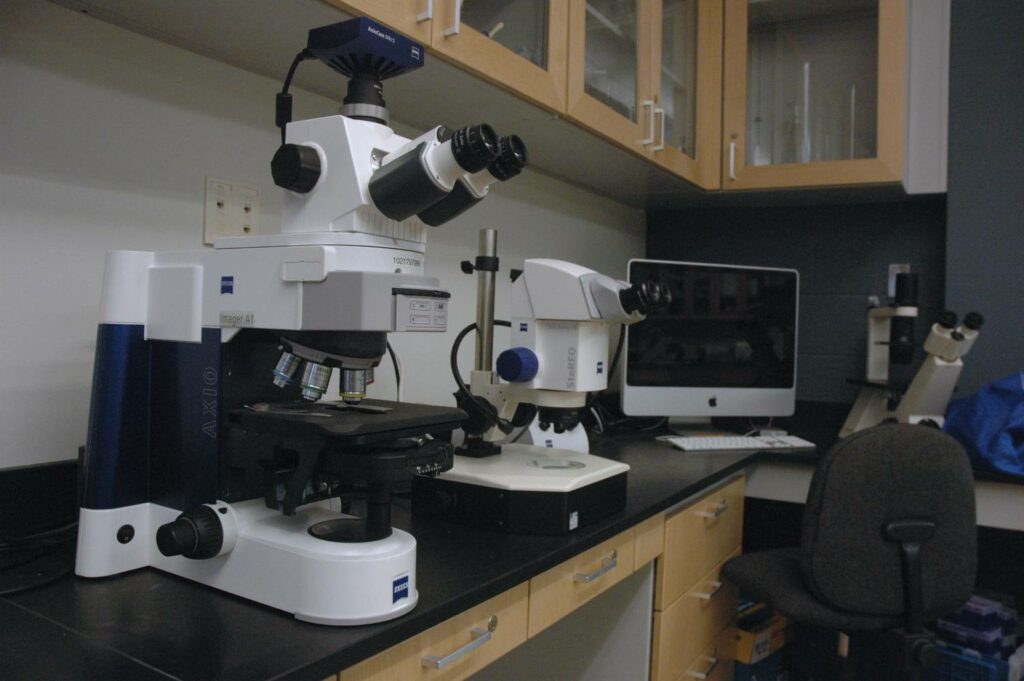Turfgrass Disease Diagnosis: A Bit of Science and a Lot of Art
go.ncsu.edu/readext?1015180
en Español / em Português
El inglés es el idioma de control de esta página. En la medida en que haya algún conflicto entre la traducción al inglés y la traducción, el inglés prevalece.
Al hacer clic en el enlace de traducción se activa un servicio de traducción gratuito para convertir la página al español. Al igual que con cualquier traducción por Internet, la conversión no es sensible al contexto y puede que no traduzca el texto en su significado original. NC State Extension no garantiza la exactitud del texto traducido. Por favor, tenga en cuenta que algunas aplicaciones y/o servicios pueden no funcionar como se espera cuando se traducen.
Português
Inglês é o idioma de controle desta página. Na medida que haja algum conflito entre o texto original em Inglês e a tradução, o Inglês prevalece.
Ao clicar no link de tradução, um serviço gratuito de tradução será ativado para converter a página para o Português. Como em qualquer tradução pela internet, a conversão não é sensivel ao contexto e pode não ocorrer a tradução para o significado orginal. O serviço de Extensão da Carolina do Norte (NC State Extension) não garante a exatidão do texto traduzido. Por favor, observe que algumas funções ou serviços podem não funcionar como esperado após a tradução.
English
English is the controlling language of this page. To the extent there is any conflict between the English text and the translation, English controls.
Clicking on the translation link activates a free translation service to convert the page to Spanish. As with any Internet translation, the conversion is not context-sensitive and may not translate the text to its original meaning. NC State Extension does not guarantee the accuracy of the translated text. Please note that some applications and/or services may not function as expected when translated.
Collapse ▲Turfgrass disease diagnosis is challenging. Despite what many in the general public and maybe even within the industry think, turfgrass systems are not sterile environments. Many researchers have documented extreme numbers of microbes in the soil in which turfgrass is planted. There can be 108 to 109 bacterial cells and 105 to 106 fungi in 1 gram of soil in turfgrass systems! So, when examining turfgrass exhibiting disease symptoms or any stress, numerous organisms can be present. Multiple plant pathogenic fungi are also present because many turfgrass pathogens also serve as decomposers of dead plant material. So, the presence of a pathogen does not equal disease. This is a fundamental principle of plant disease diagnosis that is often overlooked. Finding a plant pathogen in a sample is common even in healthy turfgrass stands, yet the turf is healthy, so it is not a disease.

Microscopes are required to identify turfgrass pathogens accurately.
Remember, a disease is the plant’s reaction to pathogen infection and colonization. Without the pathogen’s presence, a disease cannot develop, but the host has to be susceptible, and most importantly, the environment needs to be conducive to disease development. Without all of those coming together at a given point in time, disease CANNOT develop! For example, we went about 26 days in the Raleigh area without a measurable amount of rain in June. Hence, we observed little disease activity in our area or even at the Turfgrass Research Farm, where we tried to manipulate the environment to predispose the turf to disease. At least for turfgrass diseases, the environment side of the disease triangle is the most critical factor in disease development. Why? The most common pathogens are ubiquitous in almost every turfgrass stand. This is why finding the pathogen is only a piece of the diagnostic puzzle.

Many different organisms can be present in a sample, so the art of disease diagnosis matches the proper pathogen with the most appropriate plant and stand symptom. We have observed activity like this and determined that the symptoms result from abiotic injury, too.
Suppose a disease is present at a facility. In that case, the next piece of the diagnostic puzzle is to match the stand and plant symptoms with the appropriate pathogen and environmental conditions. This is where you play a crucial role as a turfgrass professional. Your observations and the information you provide are not just important; they are essential and highly valued in this process. This is why our lab now requires photos when you submit samples. It allows us to see precisely what is occurring at your facility and makes our diagnosis more accurate. Some folks have indicated they want to avoid leading us to a particular answer with the information they provide. However, when you visit the doctor’s office with an issue, do you stare at the doctor without giving information? Of course not! The same is true with turfgrass disease diagnosis. The more information that is provided to the diagnostician, the better.

Most labs prefer next-day or second-day delivery as shipping methods to ensure they receive samples in the best condition possible.
Tips for Success in Disease Diagnosis:
- Listen to John Prine’s song “Spanish Pipedream.” The song’s lyrics say to blow up your TV; we would change that to blow up your social media! The photo diagnoses on social media are comical as most are entirely wrong. Plus, it does not look good to be spouting fungicide recommendations without submitting a sample to a lab.
- Whatever lab you use, read their instructions on sample submission carefully! Our lab lays out instructions here.
- In our experience, use something other than the US Post Office to ship samples.
- Try not to spray before collecting the sample. That will hamper our ability to find the pathogen if it is a problem.
Refrain from expecting miracles with fungicide applications. What do we mean? Many folks submit follow-up samples, wondering if the pathogen is gone. Fungicides DO NOT eradicate fungi. They temporarily pause fungal growth, which should, in turn, allow your turf to recover if it is actively growing.


